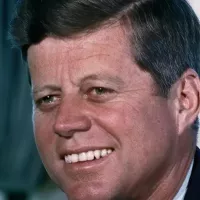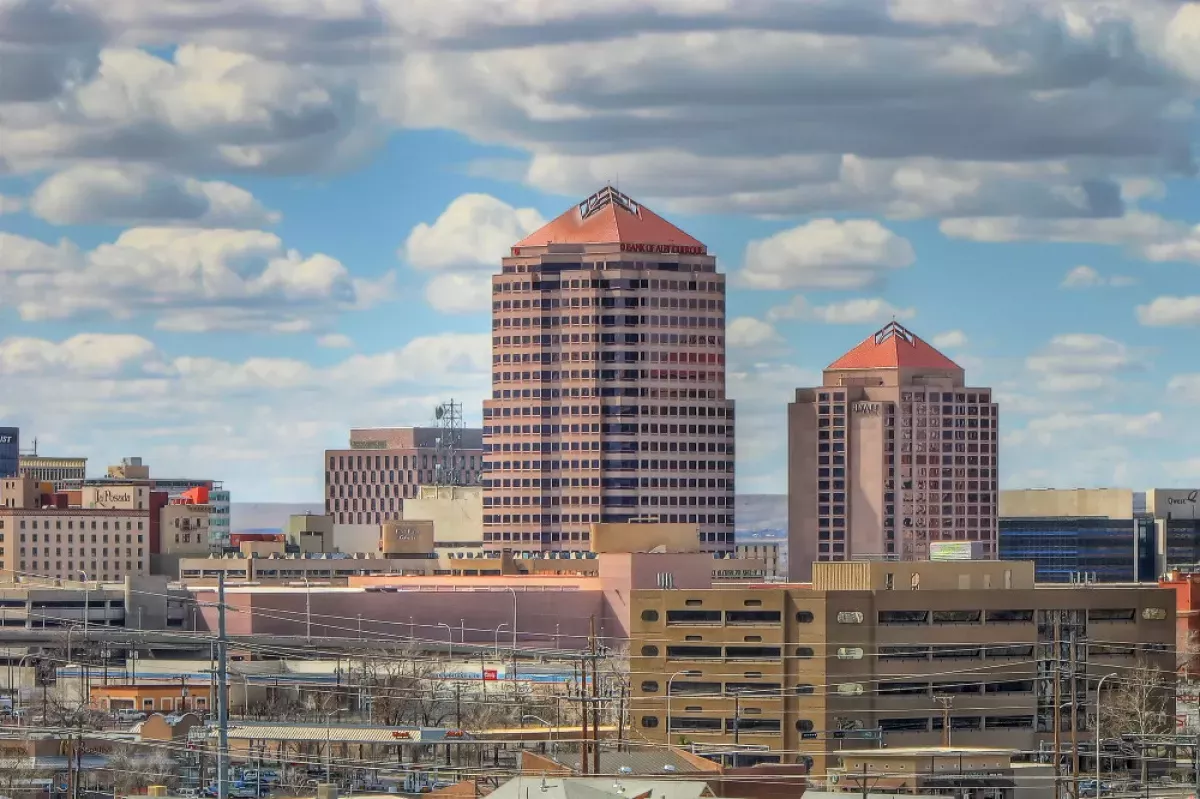Albuquerque, the most populous city in New Mexico, boasts a rich history dating back to its founding in 1706. Originally named La Villa de Alburquerque, the city was established as a strategic outpost on the El Camino Real, the vital trade route connecting Mexico City to northern New Spain. Its namesake, Francisco Fernández de la Cueva, the 10th Duke of Alburquerque and Viceroy of New Spain, is honored in the city's name. Today, Albuquerque is affectionately known by locals as ABQ and the Duke City.
1900: Albuquerque's Modernization
By 1900, Albuquerque had grown to a population of 8,000 and boasted modern amenities such as an electric street railway connecting key areas, including the University of New Mexico campus.
1901: Establishment of Albuquerque's First Public Library
Albuquerque's first public library, housed in what would later become the Old Main Library, opened in 1901, donated by Joshua and Sarah Raynolds.
1902: Alvarado Hotel Construction
The Alvarado Hotel, a significant landmark for Albuquerque, was built in 1902 near the passenger depot.
1905: Albuquerque Traction Company Takes Over Streetcar System
In 1905, the Albuquerque Traction Company took control of the city's electric street railway system.
1915: Albuquerque Traction Company Fails, City Electric Company Formed
The Albuquerque Traction Company faced financial difficulties and collapsed in 1915, leading to the creation of the City Electric Company to manage the streetcar system.
1917: Albuquerque's City Charter Adoption
In 1917, Albuquerque adopted its city charter, marking a significant step in its self-governance journey.
1923: Fire Damages Old Main Library
In 1923, the Old Main Library suffered fire damage, prompting the city to consider a new, larger library building.
1926: Route 66 Arrival
The first travelers on Route 66 arrived in Albuquerque in 1926, prompting the establishment of various businesses along the route.
1927: City Electric Company Fails, Streetcar Era Ends in Albuquerque
Despite efforts to sustain the streetcar system, the City Electric Company also experienced financial troubles and ceased operations in 1927, marking the end of the streetcar era in Albuquerque.
1933: John Gaw Meem's Commission for the University of New Mexico
Architect John Gaw Meem received a significant commission in 1933 to design buildings for the University of New Mexico, which would solidify the university's distinctive Southwestern architectural style.
1937: Route 66 Realignment
Route 66, originally running north-south along Fourth Street, was realigned to Central Avenue in 1937, creating a more efficient east-west route through Albuquerque.
1939: Establishment of Kirtland Air Force Base
The establishment of Kirtland Air Force Base in 1939 marked a turning point for Albuquerque, making it a significant location during the Atomic Age.
1945: First Use of the Albuquerque Line in Bugs Bunny Cartoons
In the 1945 Bugs Bunny cartoon "Herr Meets Hare," Bugs Bunny famously uses the line "I knew I should have taken that left toin at Albakoykee (left turn at Albuquerque)."
1948: Old Main Library No Longer Serves as the Main Library
The Old Main Library served as Albuquerque's sole public library until 1948.
1948: Release of the Western Film "Albuquerque"
The Western film titled "Albuquerque" was released in 1948.
1949: Establishment of Sandia National Laboratories
With the founding of Sandia National Laboratories in 1949, Albuquerque further cemented its role in the Atomic Age.
April 11, 1950: B-29 Bomber Crash
On April 11, 1950, a USAF B-29 bomber carrying a nuclear weapon crashed into a mountain close to Manzano Base.
1950: John Gaw Meem Designs Cathedral Church of St. John
John Gaw Meem designed the Cathedral Church of St. John in 1950.
May 22, 1957: B-36 Nuclear Bomb Incident
On May 22, 1957, a B-36 bomber accidentally dropped a Mark 17 nuclear bomb near the Kirtland Air Force Base control tower during landing. Fortunately, only the non-nuclear trigger detonated because the bomb was not armed.
1960: Population Growth and Expansion
Albuquerque continued expanding, with the Northeast Heights seeing significant growth, and by 1960, the city's population reached 201,189 according to the US Census.
1961: Inauguration of New Mexico Arts and Crafts Fair
The first New Mexico Arts and Crafts Fair, a significant platform for local artists, took place in 1961, marking the beginning of a tradition celebrating artistic talent.
1962: San Juan–Chama Project Initiated
President John F. Kennedy signed legislation in 1962 marking the beginning of the San Juan–Chama Project, a crucial step in securing water resources for Albuquerque.
1966: Construction of the "Big I" Interchange
The "Big I," the iconic interchange connecting I-40 and I-25 in Albuquerque, was initially constructed in 1966.
1967: Release of Billy Mize's Album "Lights of Albuquerque"
Billy Mize's album, "Lights of Albuquerque," was released in 1967.
1970: Old Main Library Becomes Special Collections
By 1970, due to population growth and increasing library needs, the Old Main Library was repurposed into Special Collections.
1970: Demolition of Alvarado Hotel
The Alvarado Hotel, once a symbol of the city, was demolished in 1970 due to it becoming outdated, and the site was repurposed as a parking lot.
1971: San Juan–Chama Project Completed
The San Juan–Chama Project, designed to deliver water from the Colorado River Basin to the Rio Grande, was completed in 1971.
1974: Shift to Mayor-Council System
Albuquerque transitioned to a mayor-council system in 1974, moving away from the commission-manager system and reshaping its local governance.
1974: Bernalillo County Builds and Administers the South Valley Library
The year 1974 marked the beginning of Bernalillo County's direct involvement in public library services with the construction and administration of the South Valley Library.
September 1979: Old Main Library Becomes a Landmark
Albuquerque's Old Main Library was designated as a landmark in September 1979.
1980: Record High Temperatures
The summer of 1980 saw Albuquerque experience a record-breaking heatwave, with the Sunport recording 28 consecutive days of temperatures at or above 100°F (38°C).
1984: Founding of the Ayurvedic Institute
The year 1984 marked the establishment of the Ayurvedic Institute in Albuquerque, one of the pioneering institutions outside India to specialize in Ayurvedic medicine.
1986: Joint Library System Establishment
In 1986, a collaborative effort led to the creation of the Albuquerque/Bernalillo County Library System, a testament to the partnership between the City of Albuquerque and Bernalillo County.
1986: Release of Jim Glaser's Song "The Lights of Albuquerque"
Jim Glaser released the song "The Lights of Albuquerque" in 1986.
1986: Formation of Albuquerque/Bernalillo County Library System
Recognizing the benefits of a collaborative approach, the governments of Albuquerque and Bernalillo County established the Albuquerque/Bernalillo County Library System in 1986.
1990: Demographic Shifts in Albuquerque
The 1990 US Census highlighted the changing demographics of Albuquerque, reporting a population composition of 34.5% Hispanic and 58.3% non-Hispanic white.
2000: Albuquerque's Population at 448,607
In 2000, the population of Albuquerque, New Mexico, was recorded as 448,607.
2002: Planned Growth Strategy Introduced
In an effort to promote balanced and sustainable urban development, the Planned Growth Strategy was introduced in 2002.
2002: Rebuilding of the "Big I" Interchange
The "Big I" interchange underwent a significant reconstruction in 2002, demonstrating a commitment to maintaining and improving crucial infrastructure.
2002: Alvarado Transportation Center Opening
The Alvarado Transportation Center, designed in a style reminiscent of the old Alvarado Hotel, was built in 2002 and serves as a central hub for various transportation modes in Albuquerque.
2003: Bernalillo County Metropolitan Detention Center Opening
The year 2003 marked the opening of the Bernalillo County Metropolitan Detention Center, a facility initially co-managed by the City of Albuquerque and Bernalillo County.
2004: Planned Growth Strategy Adopted
By 2004, the community had fully embraced the Planned Growth Strategy, implementing it as a framework for future development.
2005: Albuquerque Tricentennial Celebration Begins
Albuquerque commenced the celebration of its tricentennial in 2005, hosting a diverse range of cultural events.
2005: New Mexico's Acquisition of BNSF Right-of-Way
In 2005, New Mexico purchased a BNSF right-of-way, paving the way for the future development of the New Mexico Rail Runner Express.
July 2006: Rail Runner Express Commencement
The New Mexico Rail Runner Express, a commuter rail line, initiated service between Sandoval County and Albuquerque in July 2006. This new transportation option utilized an existing BNSF right-of-way.
2006: Albuquerque Tricentennial Celebration Continues
Albuquerque continued to celebrate its tricentennial throughout 2006 with various cultural events.
2006: Shift in Detention Center Management
Bernalillo County assumed full management of the Bernalillo County Metropolitan Detention Center in 2006, previously under joint management with the City of Albuquerque.
2006: Severe Winter Storm
From December 28th to 30th, 2006, Albuquerque experienced a severe winter storm, with snowfall ranging from 10.5 to 26 inches across different parts of the city.
2006: Modern Streetcar Project Proposal and Opposition
In 2006, a proposal for a "Modern Streetcar" project in Albuquerque, championed by Mayor Martin Chavez, faced strong resistance from residents, ultimately leading to the project's failure due to lack of funding.
June 2007: Albuquerque Ranked Sixth Fastest-Growing City
In June 2007, Albuquerque was recognized for its rapid growth, being listed as the sixth fastest-growing city in the United States.
September 2008: Albuquerque Police Department Ranking
In September 2008, the U.S. Department of Justice ranked the Albuquerque Police Department as the 49th largest police department in the country.
December 17, 2008: Rail Runner Express Expansion to Santa Fe
The New Mexico Rail Runner Express expanded its services to Santa Fe on December 17, 2008, enhancing regional connectivity and offering an alternative mode of transportation.
2008: Closure of "The Albuquerque Tribune"
The Albuquerque Tribune ceased publication in 2008, leaving the Albuquerque Journal as the city's primary newspaper.
2008: Completion of ABCWUA's Drinking Water Supply Project
The completion of the ABCWUA's Drinking Water Supply Project in 2008 marked a significant shift in Albuquerque's water management, ending previous arrangements of reselling water to downstream owners in Texas.
2009: Albuquerque's First Bicycle Boulevard Opens on Silver Avenue
Albuquerque marked a significant step in promoting cycling in 2009 by opening its inaugural Bicycle Boulevard on Silver Avenue, demonstrating a commitment to enhancing urban mobility and encouraging eco-friendly transportation options.
2009: Continued Population Growth
Albuquerque's population was estimated at 528,497 in 2009, demonstrating continued growth from the 448,607 recorded in the 2000 census.
2010: Downtown Albuquerque's Revival
Around 2010, Downtown Albuquerque began to experience a resurgence with the construction of loft apartments and the renovation of historical buildings like the KiMo Theater, reversing the previous trend of decline.
2010: 2010 Household Composition in Albuquerque
In 2010, 33.3% of Albuquerque households had children under 18, with 43.6% being married couples, 12.9% single mothers, and 38.5% non-families. Individuals comprised 30.5% of households, and 8.4% were single-person households aged 65 or older.
2010: 2010 Median Income and Poverty in Albuquerque
In 2010, Albuquerque's median household income was $38,272, and the median family income was $46,979. Males earned a median income of $34,208, while females earned $26,397. The per capita income was $20,884. About 10.0% of families and 13.5% of the population were below the poverty line.
2010: 2010 Age and Gender Distribution in Albuquerque
In 2010, the age distribution in Albuquerque was as follows: under 18 (24.5%), 18-24 (10.6%), 25-44 (30.9%), 45-64 (21.9%), and 65+ (12.0%). The median age was 35 years. For every 100 females, there were 94.4 males, and for every 100 females aged 18 and over, there were 91.8 males.
2010: Southern Rocky Mountain Front Megalopolis Population in 2010
The Southern Rocky Mountain Front megalopolis, which includes the Albuquerque–Santa Fe–Los Alamos CSA, had a population of 5,467,633 in 2010.
2011: Walk Score Study Ranks Albuquerque's Walkability
In 2011, a Walk Score study evaluated Albuquerque's walkability and ranked it 28th out of the 50 largest U.S. cities, indicating a below-average performance in areas like public transportation access and proximity to amenities.
2011: Bus Rapid Transit System Study Commissioned
The City of Albuquerque commissioned a study in 2011 to explore the feasibility of a bus rapid transit system along the Central Avenue corridor, addressing the high volume of bus riders in that area.
2013: BioScience Center Opening
Albuquerque saw the opening of its first private incubator for biotechnology startups, the BioScience Center, in Uptown Albuquerque in 2013, marking a significant step for the bioscience sector.
February 2015: Major Winter Storm
In late February 2015, Albuquerque was hit with a major winter storm, resulting in significant snowfall, with some areas receiving up to a foot of snow.
2015: USARS Championships in Albuquerque
Albuquerque hosted the USARS Championships in 2015, solidifying its growing presence in the world of roller sports.
2015: Albuquerque Adopts Bikeway & Trails Facility Plan
In 2015, Albuquerque further solidified its commitment to cycling infrastructure by adopting the "Bikeway & Trails Facility Plan." This comprehensive plan outlined strategies to enhance and broaden the existing cycling network, introduce new routes, and implement bike-sharing initiatives, further solidifying the city's dedication to sustainable transportation solutions.
2016: Albuquerque-Santa Fe-Los Alamos Combined Statistical Area Population in 2016
The Albuquerque–Santa Fe–Los Alamos combined statistical area (CSA) had a population of 1,171,991 in 2016.
2017: Albuquerque's Parkland Abundance
By 2017, Albuquerque boasted an impressive 291 public parks, covering 42.9 square miles, reflecting a commitment to green spaces and outdoor recreation.
2017: Construction Begins on Albuquerque Rapid Transit
Construction on the Albuquerque Rapid Transit (ART) system began in 2017, marking a crucial step toward improving public transportation infrastructure and connectivity.
2017: Establishment of the Bioscience Authority
In a bid to foster local industry development, the state-funded Bioscience Authority was established in 2017, focusing on public-private partnerships within the bioscience sector.
2017: Tim Keller Elected Mayor
Tim Keller was elected as the mayor of Albuquerque in 2017.
June 6, 2018: New Mexico United Soccer Team Announcement
On June 6, 2018, the USL Championship division revealed its latest expansion team, New Mexico United. The team's home games would be played at Rio Grande Credit Union Field at Isotopes Park.
2018: Homelessness in Albuquerque in 2018
Data from the Coordinated Entry System in 2018 revealed that approximately 5,000 households in Albuquerque experienced homelessness.
November 2019: Launch of Albuquerque Rapid Transit
Albuquerque welcomed a new era in public transportation with the launch of Albuquerque Rapid Transit (ART) in November 2019, aiming to improve transit efficiency and accessibility.
2019: Homelessness in Albuquerque in 2019
In 2019, an estimated 4,000 to 4,500 homeless individuals resided within the Albuquerque metropolitan area. The fastest-growing demographics among the homeless population were millennials and the elderly.
January 1, 2020: Albuquerque Rapid Transit Fare Implementation
Albuquerque Rapid Transit (ART) started charging fares from January 1, 2020, after offering free rides during its initial operational phase.
July 2020: Albuquerque Metropolitan Area Population in July 2020
The Albuquerque metropolitan area had 923,630 residents in July 2020.
2020: 2020 Racial Demographics of Albuquerque
According to the 2020 US Census, the racial makeup of Albuquerque was 60.3% White, 4.5% Native American, 3.1% Black or African American, 3% Asian, 0.1% Native Hawaiian and other Pacific Islander, and 9.2% Multiracial. Hispanics or Latinos of any race made up 47.7% of the population.
2020: Post-2020 Economic Growth in Albuquerque
From 2020 onwards, Albuquerque witnessed robust growth in specific sectors of its economy, including construction, film production, and retail trade.
2020: 2020 US Census Data for Albuquerque
The 2020 US Census recorded Albuquerque's population at 564,559, with a population density of 2,907.6 inhabitants per square mile.
2020: 2020 US Census
The 2020 US Census recorded Albuquerque, New Mexico, as the 32nd-most populous city in the United States.
2020: Cancellation of Albuquerque International Balloon Fiesta
The Albuquerque International Balloon Fiesta, a major event in the city, was canceled in 2020 due to the global COVID-19 pandemic.
September 2021: PNM Resources Enters Merger Talks with Avangrid
In September 2021, PNM Resources, New Mexico's primary electricity provider headquartered in Albuquerque, initiated final merger discussions with Avangrid, a U.S. subsidiary of the Spanish energy giant Iberdrola.
2021: Albuquerque's Bike Friendliness Ranked by Walk Score
In 2021, Albuquerque received recognition for its bike-friendliness, securing the 26th spot out of 130 U.S. cities according to a Walk Score study. The city's ranking was attributed to its robust infrastructure, favorable terrain, and efficient connectivity for cyclists.
2021: Return of Albuquerque International Balloon Fiesta
The Albuquerque International Balloon Fiesta made a successful return in 2021 after its cancellation in 2020.
2022: Curia's Expansion in Albuquerque
Pharmaceutical company Curia, a significant player in Albuquerque's bioscience sector, commenced a $100 million expansion of its local operations in the fall of 2022.
2023: Albuquerque Metropolitan Area Growth
In 2023, the Albuquerque metropolitan area reached a population of 955,000 residents, making it a significant part of the Albuquerque–Santa Fe–Los Alamos combined statistical area.
2050: Santolina Master Plan and Projected Growth
The Santolina Master Plan, a newly adopted development plan, aims to expand development on the west side of Albuquerque and accommodate a population of 100,000 by 2050.
2060: Projected Water Budget of ABCWUA
The ABCWUA projects that by 2060, river water will constitute about 70% of its water budget, with the remaining portion coming from groundwater.
Mentioned in this timeline

John F Kennedy JFK was the th U S President...
India officially the Republic of India is a South Asian...
Colorado a Mountain and Southwestern U S state is the...
Texas the second-largest US state by area and population is...
Mexico officially the United Mexican States is a North American...

Justice in its broadest sense is the concept of treating...
Trending

Simon Cowell is a prominent English television personality and businessman recognized for his role as a judge on various talent...

7 months ago Gary Payton Reflects on Jordan Matchup and Hypothetical Stats in Today's NBA

11 days ago Spurs Defeat Nuggets in Thrilling Game, Mavericks Face Nuggets

22 days ago Michael Douglas and Catherine Zeta-Jones Celebrate 25 Years of Marriage with Throwbacks
Luke Kornet is an American professional basketball player currently playing for the San Antonio Spurs in the NBA He's a...

6 months ago Jack Black's Minecraft Movie Sets Premiere on HBO Max, June 20, 2025
Popular

Candace Owens is an American conservative political commentator and author...

Ilhan Omar is an American politician currently serving as the...

XXXTentacion born Jahseh Dwayne Ricardo Onfroy was a controversial yet...

Tom Cotton is an American politician and Army veteran currently...
The Kennedy Center Honors are annual awards recognizing individuals and...

Kelsey Grammer is an accomplished American actor producer and singer...
